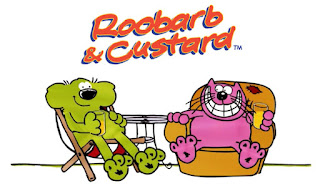I know Stilton has its haters, but there are worse forms of cheese. Take Casu Marzu, for example. This cheese from Sardinia has actual live maggots in it. Thinking that you might try the cheese with the blue mould on it is one thing, but to actually have an internal monologue saying "You know what this cheese needs? Maggots who've been pre-eating the cheese" really is overstepping the mark. The taste of this monstrosity apparently lingers with you for hours. I've not actually eaten Casu Marzu, but I hazard to guess that even this aberration of putrid milk, complete with maggots, still tastes better than Cheese Strings. Young Master Sweary would probably eat shit if you sprinkled it with chocolate, but even he won't touch Cheese Strings and, having tasted them myself, I can understand why. They are truly fucking diabolical.
Though it's in the shops all year round, Stilton in the UK is really only promoted to sell at Christmas. Indeed, most people who eat it only have it in the festive period when it accompanies crackers after a stomach-rupturing Christmas dinner as the Queen delivers her message to the Commonwealth. The nature of the extravagant feast of Christmas means that there is invariably a mountain of food left over, most of it perishable. This includes a pyramid's worth of cheese which presents the dilemma of what to do with what's left before it goes completely off. Stilton probably doesn't lend itself to using up in sandwiches, besides which there is usually the remains of a large turkey to consume which is best in sandwiches (as well as the obligatory turkey curry, which is another recipe in the pipeline to post at a later date). This soup is ideal to dispose of, not only the large block of blue cheese that needs to be consumed, but also the remains of the broccoli that is likely to be festering in the salad bowl of the fridges. This pleases me greatly since, when it comes to food, I really fucking hate throwing good stuff out. Better still if it makes something like this classy soup that gave me three or four good lunches at work the following week.
This soup, despite being made from leftovers, really is fantastic.The subtle blue cheese and broccoli go together so well and it beats anything you can buy in a tin.
INGREDIENTS
1 tbsp olive oil
1 onion chopped
1 clove garlic, crushed
1 carrot, diced
1 stick celery
1 potato, diced
1.2 litres water
2 vegetable stock cubes
100g Stilton, crumbled
300g broccoli, cut into chunks, including stalk
Black pepper
RECIPE
Heat the olive oil in a pan and add the garlic and onion to gently sauté for 10 minutes or so.
Add the potato, carrot and celery and carry on cooking for another 15 minutes.
Add the water and stock cubes and throw in the stalk pieces of the broccoli.
Bring to the boil and gently simmer for 15-20 minutes then add the broccoli florets.
Simmer for another 10 minutes then scatter in the Stilton and add black pepper to taste.
Allow the stilton to melt into the soup then liquidise until smooth, or leave it a little chunky if you prefer.
I took this to work to have as lunch. You could serve it as a starter, maybe. Serve it however you want to, I'm not your Mum. It is great with some crusty bread, though.
NOTES
You could add to the richness of this soup by adding a slug of cream (again, a common thing to use up after the Christmas binge). A good nip of sherry would also be a good idea.
To liquidise, use a hand blender or put the soup in an upright blender. However, if it is an upright the soup might have to be cooled if the jug is plastic and also it might spray all over the kitchen and could give you a broccoli and Stilton face peel if you don't close the lid properly. I don't know, as I said above, I'm not your Mum. Figure out how to use your own kitchen equipment for yourself.
This recipe is a rare event for this blog in that it includes cheese in it, and blue cheese at that. The recipes I usually post are things I make for my family and Mrs Sweary doesn't eat anything containing cheese or with a creamy sauce (yeah, yeah, go on with that line of thought and its eventual outcome yourself). I knocked this up for my own benefit to bring to work for lunch from Christmas leftovers before they needed to be chucked out.
I appreciate the irony of this is a way to use up Stilton before it goes off since it is, by pretty much any definition you care to look at, already off.

















